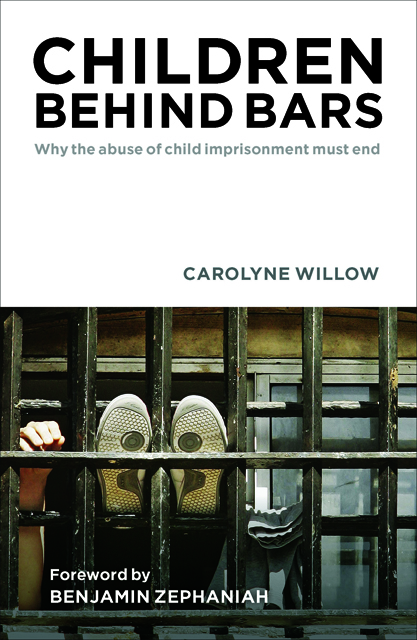Book contents
- Frontmatter
- Contents
- List of tables
- About the author
- Acknowledgements
- Preface
- Foreword by Benjamin Zephaniah
- one Introduction
- two ‘Things were not right at home’
- three ‘They just don’t listen’
- four ‘I think it’s quite like rape’
- five ‘I can’t breathe’
- six ‘What gives them the right to hit a child in the nose?’
- seven ‘We should be able to hug our families’
- eight ‘Every night I’m starving’
- nine Children were ‘given bags to urinate in’
- ten ‘The violence is unbelievable’
- eleven ‘Listen to the kids’
- twelve They shouldn’t be there
- Notes
- Index
eleven - ‘Listen to the kids’
Published online by Cambridge University Press: 15 April 2023
- Frontmatter
- Contents
- List of tables
- About the author
- Acknowledgements
- Preface
- Foreword by Benjamin Zephaniah
- one Introduction
- two ‘Things were not right at home’
- three ‘They just don’t listen’
- four ‘I think it’s quite like rape’
- five ‘I can’t breathe’
- six ‘What gives them the right to hit a child in the nose?’
- seven ‘We should be able to hug our families’
- eight ‘Every night I’m starving’
- nine Children were ‘given bags to urinate in’
- ten ‘The violence is unbelievable’
- eleven ‘Listen to the kids’
- twelve They shouldn’t be there
- Notes
- Index
Summary
Institutional child abuse was first officially recognised in the UK nearly five decades ago, though of course there were scandals before. Children who live in institutions are, by definition, profoundly vulnerable. Their parents are physically and emotionally remote, if available at all, and their surroundings are abnormal. When the UK ratified the United Nations Convention on the Rights of the Child nearly a quarter of a century ago, it agreed to provide special protection and assistance to every child deprived of his or her family environment, irrespective of the reasons behind this loss and the length of separation. The notion that institutions can be deeply damaging to children was not a new discovery for Britain. There were child advocates pushing for de-institutionalisation from the late 19th century onwards, culminating in an influential parliamentary report in 1984 pressing for local authorities to increase support to families to prevent children entering care. The Short Committee, so called because it was chaired by Labour MP Renée Short, explained:
The state can never be a substitute for real parents. But when it is necessary, our communal responsibility to protect children must outweigh everything.
About 40% of the care population – 38,000 children – lived in residential care in 1976. This had decreased to 12% (6,000 children) 20 years later. This transformation arose from an ideological and financial rejection of institutional care in favour of keeping children with their families wherever possible. Although many forms of residential care for children in the past were known to be severe and militaristic, it was not until the 1980s and 1990s that widespread revelations of sexual and physical abuse emerged. Seventeen public inquiries were established into the abuse of children in residential care in the UK between 1985 and 2000. Attention has focused in recent years on the mistreatment of children within institutions run by religious bodies, particularly the Catholic Church and, in December 2013, the Vatican announced the creation of a commission to protect children within its organisation. Our understanding of the vulnerabilities of children separated from their parents increased in 2013 when we were forced to face the fact that one man, Jimmy Savile, had raped and sexually assaulted children in a variety of institutional settings over 40 years.
- Type
- Chapter
- Information
- Children behind BarsWhy the Abuse of Child Imprisonment Must End, pp. 231 - 258Publisher: Bristol University PressPrint publication year: 2015



